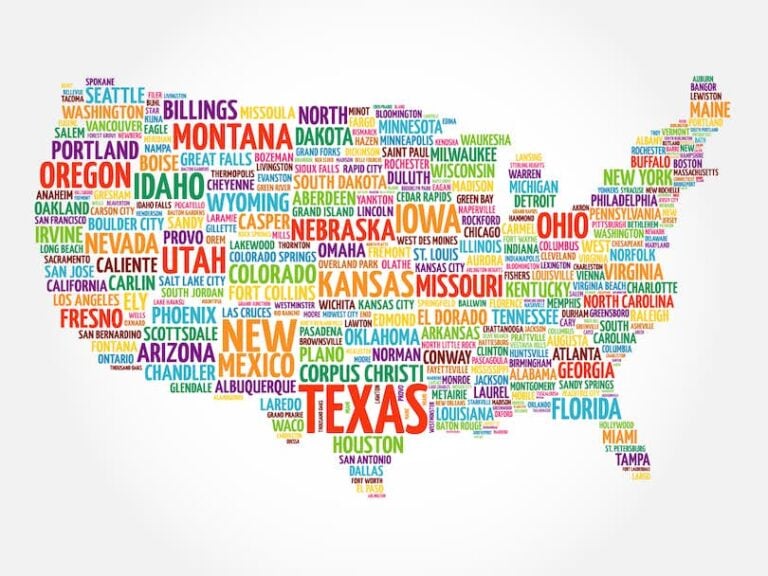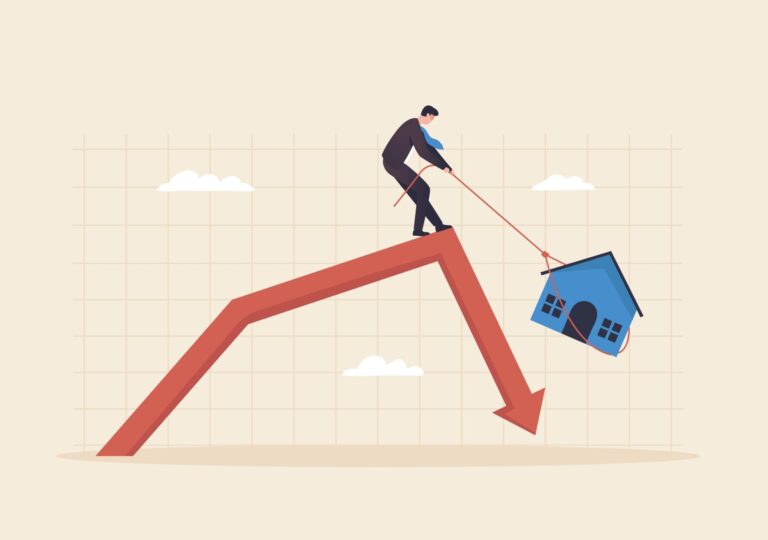
🗓️ 💸 How are Americans doing financially in 2024? 💸 🗓️
High costs and interest rates have consumers wrestling with alarming financial challenges heading into 2024. About 80% are stressed about the cost of living, and 70% say they struggle to afford basic expenses.
Key Personal Finance Statistics | Spending and Costs | Saving Patterns | Retired Americans | Money and Work | Credit Card Debt | Student Loan Debt | Financial Literacy | Housing and Real Estate Statistics
Heading into 2024, economic optimism is in short supply. Lingering impacts from the pandemic have injected an undeniable pessimism into Americans, despite the U.S. economy generally recovering faster than other countries.
Although inflation has fallen since its 2022 peak, prices remain high enough to stir fears of financial insecurity. A whopping 80% of Americans are stressed about the cost of living,[1] and 72% say they still have not financially recovered from the pandemic.[2]
As costs creep higher, Americans feel less assured about their income, with 56% of workers saying they're underpaid.[3] People are stretched so thin that 53% of the country is not saving for retirement — a trend threatening to cause its own set of crises.[4]
Homeownership, one of the most reliable ways to build wealth, remains elusive for many young Americans without extensive savings. Mortgage interest rates recently hit a 30-year high, making it even harder to buy or sell homes.
To convey how Americans feel about their finances and the state of the economy, Clever Real Estate commissioned multiple consumer surveys throughout the past year.
Below, we've compiled 99 key statistics found in our proprietary survey research. Read on to learn more.
General Personal Finance Statistics for 2024
1. Nearly two-thirds of Americans (65%) say finances are the most stressful part of their lives.[4]
2. More than half of Americans (51%) would run out of money within one month if they lost their income. About 29% say they'd run out of money in one week or less.[4]
3. About half of Americans (52%) report their net worth is less than $30,000. About 25% say their net worth is $0 or negative.[4]
4. 39% of Americans went deeper into debt in 2023, and 35% believe they'll be in debt for the rest of their lives.[4]
5. About 62% of Americans say inflation negatively impacted their finances in 2023.[4]
6. 44% of Americans say they've skipped meals to afford bills at some point.[1]
7. 72% of Americans say they still have not recovered financially from the COVID-19 pandemic. About 16% believe their finances will never recover from the pandemic.[2]
8. 80% of Americans are concerned they won't meet their financial goals in 2024.[4]
9. 37% of Americans say money does buy happiness, and 41% say their financial health is more important than their personal health.[4]
10. More than half of Americans (55%) say they’d lose everything if there was a recession.[5]
11. More than 1 in 3 Americans (36%) believe the middle class no longer exists.[5]
12. Nearly 1 in 4 Americans (24%) still receive financial support from their parents, including 46% of Gen Z and 31% of millennials.[4]
13. Just 27% of millennials say they’re doing better than their parents were at their age.[6]
14. About 90% of millennials have some form of non-mortgage debt, with an average balance of $90,590. More than one-third of millennials (36%) say their debt puts them at risk of bankruptcy.[6]
15. 66% of married couples report improved finances after marriage.[7]
16. Women are 10% less likely than men to have control over household finances.[7]
17. Nearly 1 in 5 Americans (19%) would consider marrying someone solely for financial reasons.[7]
Spending and Cost Statistics
18. 80% of Americans are stressed about the cost of living, and 73% are stressed about inflation.[1]
19. 93% of Americans say they cut back on spending in 2023 amid rising prices.[4]
20. 70% of Americans say they struggle to afford basic expenses.[5]
21. Americans' most common financial goal in 2023 was to spend less money (50%), but nearly half of that group (44%) didn't follow through. About 18% of Americans did not achieve any of their financial goals in 2023.[4]
22. 53% of credit card users have maxed out a credit card at some point — including 29% who do so monthly.[8]
23. 70% of Americans think credit cards cause consumers to spend irresponsibly.[8]
24. 56% of Americans say they want to decrease their credit card usage.[8]
25. The average American credit card user spends $1,506 on their cards per month — more than $18,000 per year. Millennials spend the most, averaging $2,410 per month or nearly $29,000 per year.[8]
26. 47% of Americans say they tend to spend more money than they earn, including 55% of Gen Z and 56% of millennials.[4]
27. More than half of millennials (57%) spent over 30% of their income on housing in 2023. Housing that costs over 30% of income is considered unaffordable by the Department of Housing and Urban Development.[6]
28. 56% of millennials say they struggle to afford bills, and 47% struggle to afford housing.[6]
29. 59% of millennials dine out once a week or more, and more than 1 in 10 (11%) say they buy a cup of coffee every day.[6]
30. 51% of millennials regret not having saved enough money.[6]
31. 44% of millennials say they cannot afford a $500 emergency expense out of pocket, including 49% of millennial women.[6]
32. 58% of Gen Zers and 52% of millennials have bought a product an online influencer recommended, compared to 13% of baby boomers.[9]
Savings Statistics
33. Most Americans (53%) say they are not currently saving for retirement.[4]
34. 57% of Americans are stressed about not having enough money saved for retirement.[1]
35. 62% of Americans say they are not on track to have enough saved for retirement, including nearly 2 in 3 baby boomers (63%).[4]
36. About 37% of non-retired Americans say they won't be able to retire until they're at least 75, and 23% say they won't be able to retire until at least 80.[4]
37. 44% of Americans do not regularly put a portion of their paycheck into savings.[4]
38. Just under half of Americans (49%) say they have dipped into their retirement savings or emergency savings in 2023.[4]
39. 69% of Americans are stressed about not having enough emergency savings.[1]
40. One-third of Americans (33%) have no emergency savings, and 43% say they could not afford a $2,000 emergency without using their credit card.[8]
41. 86% of millennials save less than the recommended 15% of their income for retirement.[6]
42. The average millennial has about $42,948 in savings — a decrease of roughly $6,500, or 13%, since 2022.[6]
43. 58% of Gen X say they have less saved at their current age than they expected they would.[10]
44. 22% of Gen X have nothing saved for retirement, and 43% of Gen Xers regret not having saved more money.[10]
45. About 1 in 5 Gen Xers (19%) aren't confident they'll be able to retire before 80, and 11% believe they will never be able to retire.[10]
Retired Americans Statistics
46. 37% of American retirees say they have nothing saved for retirement.[11]
47. The average retiree has $170,726 in savings — down from $191,659 in 2022.[11]
48. Nearly half of retirees (48%) believe they'll outlive their retirement savings.[11]
49. 71% of retirees have non-mortgage debt, with an average balance of $19,888. Nearly 1 in 5 retirees (18%) have medical debt, with an average balance of $10,259.[11]
50. 2 in 3 retirees (65%) stopped working sooner than they planned, with half of that group citing health concerns as the reason (50%).[11]
51. 30% of retirees rely on Social Security as their sole source of income.[11]
52. 60% of retirees say their former employers did not do enough to help them prepare for retirement.[11]
53. 44% of retirees say they struggle to afford basic living expenses.[11]
54. 1 in 3 retirees (32%) have considered rejoining the workforce in some capacity.[11]
Money and Work Statistics
55. More than half of American workers (56%) say they are underpaid.[3]
56. About 1 in 3 Americans (32%) are working a second job or a side gig to earn additional income, while more than 1 in 4 (28%) are looking for a new job.[5]
57. Nearly 3 in 4 college students (72%) think majoring in a high-demand field will guarantee them a job immediately after graduation.[12]
58. 78% of college students overestimate what they’ll make at their first entry-level job.[12]
59. College students expect to make $84,855 on average one year after graduation — 52% more than the average starting salary of $55,911. They say they won’t work for less than $72,580 on average at their first job.[12]
60. The average mid-career salary is $98,647, but college students anticipate making $204,560 a decade after graduation.[12]
61. Nearly 8 in 10 college students (79%) think they deserve more than the average starting salary. About 64% say they deserve more because they are smarter than their peers.[12]
62. The average millennial says they need a salary of $119,406 to live comfortably.[6]
Credit Card Debt Statistics
63. About 3 in 5 Americans (61%) are in credit card debt, owing an average of $5,875. Millennials owe $6,794 on average, the most of any generation.[8]
64. 23% of credit card users say they go deeper into debt every month.[8]
65. Of those with credit card debt, 49% blame their own excessive spending habits.[8]
66. 81% of Americans with credit card debt are also in some other form of debt, such as auto debt (33%) or student loan debt (27%).[8]
67. 43% of credit card users have missed a payment in the last five years, including 14% in 2023.[8]
68. 57% of credit card users are concerned about the impact of rising interest rates on their credit card debt.[8]
69. 47% of Americans who have had credit card debt say it prevented them from building emergency savings, and 22% say it has prevented them from buying a home.[8]
70. Nearly 1 in 3 credit card users (29%) have sought professional financial advice or counseling about credit card debt.[8]
71. Americans rank credit card debt as the most stressful form of debt, ahead of medical debt and mortgage debt.[8]
Student Loan Debt Statistics
72. 1 in 4 millennials (25%) owes money on student loans, with an average balance of $56,538. About 1 in 6 millennials (16%) say they owe at least $150,000.[6]
73. About 48% of millennials say college was not worth the trouble of student loans,[6] and 40% of current college students regret their decision to attend college.[12]
74. 89% of current college students are graduating with at least some debt, and 61% wish they’d chosen a less expensive college.[12]
75. 69% of college students think a college education should be free, and 63% think student loans should be forgiven.[12]
76. Only 44% of student loan borrowers say they made loan payments during the pandemic-era pause of mandatory payments.[4]
Financial Literacy Statistics
77. Nearly half of Americans (46%) consider money management the most important life skill — more than communication, critical thinking, or problem-solving skills.[13]
78. 46% of Americans admit they're insecure about their lack of financial knowledge.[4]
79. 83% of Americans regret not doing more to improve their finances in 2023.[4]
80. Most credit card users (53%) tend to spend more when using their credit cards than when they use cash or debit.[8]
81. 31% of credit card users say they have opened a new card without doing any prior research.[8]
82. About 28% of credit card users say they don't know their credit card's interest rate.[8]
83. 27% of millennials say they don’t know their credit score.[6]
84. About 2 in 3 Gen Z Americans (66%) say their generation is the most irresponsible with money.[9]
85. More than 1 in 5 Americans (21%) don’t know that a 401(k) is a retirement savings plan employers offer to workers.[13]
86. 17% of Americans mistakenly believe it’s best to wait until their 40s to start saving for retirement.[13]
Housing and Real Estate Statistics
87. House prices across the U.S. have soared 162% since 2000, while income has increased only 78%.[14]
88. If home prices had grown at the same rate as income since 2000, the median U.S. home would cost nearly $294,000 — about 32% less than today’s price of $433,100.[14]
89. It is cheaper to rent than buy in 45 of the 50 most populous U.S. cities. San Jose, California, is the most expensive city for buying a home, whereas Pittsburgh is the most affordable.[15]
90. Typical U.S. home prices have increased 70% more than typical rent prices since 2016.[15]
91. San Jose has the highest rent prices ($3,181), while Milwaukee has the lowest ($1,214).[15]
92. Miami is the least affordable place to rent an apartment in the U.S. based on the rent-to-income ratio. Residents in Miami spend 28.5% of their monthly income on rent, compared to 15.5% in Cincinnati, the most affordable place to rent.[16]
93. From 1985 to 2021, rent prices have exceeded inflation by 40% and income by 7%. If rent prices grew at the same rate as inflation since 1985, the median rent would cost 19% less — just $939 a month instead of $1,163.[16]
94. Home prices have increased 42% since 2020, while inflation has increased 16%. Home prices rose 10.3% in 2022 alone, while inflation grew at a 6.3% pace.[17]
95. Florida is home to the top four cities with the largest increase in home values in the last year, with Miami having the highest increase at 16%.[17]
96. Two major cities experienced a decline in home prices in the past year. Home values in San Francisco decreased 1.6%, and home values in New Orleans decreased 0.2%.[17]
97. The median square footage of U.S. homes has increased 52% since 1980, but the median sale price has increased 609% in the same time period.[18]
98. Cleveland is the least expensive city for home-buying based on the price per square foot ($133 per square foot), while San Jose, California, is the most expensive ($845 per square foot).[18]
99. From 2014 to 2023, home values climbed an average of $48,983 more in states with recreational cannabis than in states without recreational cannabis.[19]
---
Visit ListWithClever.com/research for more data on real estate and personal finances in the U.S.
See our roundup of key personal finance statistics from last year in 2023.
About Clever
Since 2017, Clever Real Estate has been on a mission to make selling or buying a home easier and more affordable for everyone. About 12 million annual readers rely on Clever's library of educational content and data-driven research to make smarter real estate decisions. To date, Clever has helped consumers save more than $160 million on real estate fees. Clever's research has been featured in The New York Times, Business Insider, Inman, Housing Wire, and many more.






